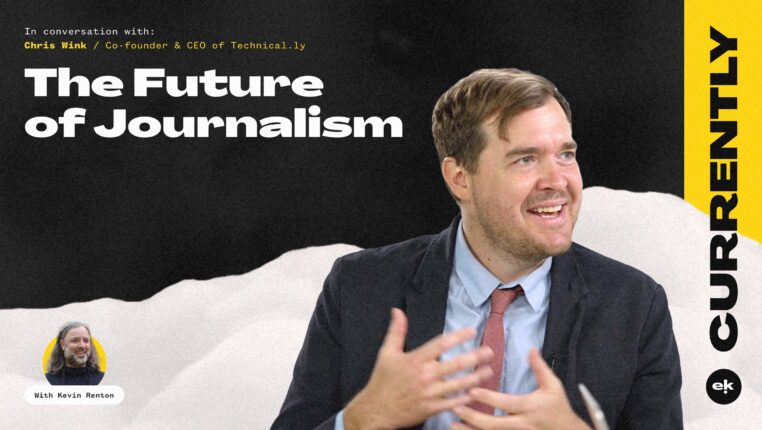Did you know that by 2020, online videos will account for more than 80% of all consumer internet traffic? Video content is no longer new or up-and-coming. It’s here to stay, and has become a key element of any successful content marketing strategy.
For those on the verge of incorporating video as content, it’s easy to feel hesitant. All too often, we associate video with the work of giants. Global expensive advertising and social campaigns brought to you by companies like Procter & Gamble, Apple, and Budweiser make it easy for small businesses and marketing teams to feel overwhelmed before they even get started.
The truth is that for most businesses, creating video content is more accessible than ever before. Between the publicly available shooting and editing tools and the rise of video-centric social platforms, marketers are well equipped to produce video frequently, inexpensively, and with the same high quality audiences have come to expect from brands and organizations.
Still not convinced that video is the way forward? Here are five ways video can bolster your content marketing strategy and drive real business results for your organization.
1. Create An Emotional Connection
It’s no secret that video resonates on a deeper, more emotional level with us as an audience than other forms of content. When done correctly, video builds another level of trust between a brand and its customers. Videos allow marketers to utilize a wide array of carefully-selected creative elements that can emotionally guide audiences through their buying journeys.
However, not all video content needs to pull at the heartstrings of your consumers or start an international movement. Rather, the video content you create should be tailored to your target users and achieve the specific goals of your organization.
The bottom line is that emotions drive actions. As the folks at Vidyard put it, “strategic video marketing begins when you use content to trigger targeted emotions and then tie these high-power feelings to a specific action.” Whether it’s the act of buying or sharing, marketers need to offer their audiences the opportunity to emotionally connect with their brands and products, and video is the key to making that happen.
2. Repurpose Content Across Multiple Channels
Video is one of the most versatile tactics to use in your content marketing strategy. One video can be repurposed into multiple types of content that can then be distributed across multiple channels.
Take, for example, our Philly Tech Week event, which we were able to turn into six different pieces of content. The full video recording of the event allowed us to generate additional cut-down videos, long and short form blog content, various social media posts, and a podcast episode. By repurposing this content, we were able to broaden our reach and engage audiences across all channels.
The rise of repurposed content is being seen on all sides of the equation: among brands, agencies, and even video production companies. “In today’s ROI-driven climate, marketers are asked to do more with less,” says Glen Zeigler, an account executive at Philadelphia-based production company Center City Film & Video. “For example, by optimizing our deliverables, we’re able to deliver more than just one client testimonial video for use on a website. We’ll look for opportunities to create additional deliverables such as a 60 or 30-second spot for TV distribution as well as 15-second clips that can be leveraged on social media channels.”
Because of the sheer number of platforms and channels in the marketplace today, marketers are constantly worried about how to prioritize content and how to ensure enough resources are in place to create that content. Repurposing video is at least one way to alleviate some of those worries in our content creation planning.
3. Improve SEO
With Youtube being the second-largest search engine in the world, it’s no wonder videos have become increasingly important in the world of SEO strategies. Gone are the days where Google ranks your site based on written content alone. Google now looks at your multimedia assets as well.
When optimized correctly, videos can have an enormous impact on your SEO ranking. Most importantly, video can help with link building and help with the amount of time your users are spending on the site. Because video makes content more shareable, posts with videos can attract 3x more inbound links than plain text posts. And on top of that, knowing that visitors will stay 2 minutes longer on a site with video helps alert Google that you’re generating quality content.
As Forrester researcher Dr. James McQuivey says, “If a picture is worth 1,000 words; a one-minute video is worth 1.8 million.” No wonder video is playing such an important role in today’s SEO strategies.
4. Better User Engagement
There’s no denying the power video has when it comes to engaging users online. Whether users are browsing a company’s website or social media channels, they are constantly looking to consume relevant content, and videos are increasingly what they’re looking for. The facts speak for themselves:
- Online videos will account for more than 80% of all consumer internet traffic by 2020 (CISCO, 2016).
- 55% of people consume videos thoroughly — the highest amount all types of content (HubSpot, 2016)
- A Facebook video receives, on average, 135% more organic reach than a Facebook photo (Socialbakers, 2015)
- Videos are 6X more likely to be retweeted than photos and 3X more likely than GIFs (Twitter, 2016)
Videos are not only effective in engaging users; they also create engagement among users. Besides the rise of social sharing, videos can serve as a way for users to engage with each other and engage with the brand in a more personal and interactive way. As many social media platforms such as Facebook, Instagram, and Snapchat begin to take a video-centric approach, companies would be remiss to not jump on this bandwagon.
5. Address All Steps of the Buyer’s Journey
In case you haven’t caught our drift yet, video is one of the most easily consumable forms of media that can be extensively leveraged in your content marketing strategy. Because video can be widely repurposed and encourages audience engagement, video allows marketers to create a consistent flow of content that speaks to users at each stage of the buyer’s journey.
When it comes to what type of video resonates best with consumers, there isn’t a one-size-fits-all method. However, educational videos typically bode well with top of funnel users, who are aware they have a problem but need more information before investigating specific solutions. For middle of the funnel customers, the Content Marketing Institute recommends using explainer videos that position your brand as a potential option for the user. Explainer videos are a great way to explain your product or service in a way that engages users and makes your brand stand out.
We live in the era of the educated customer. By the time today’s savvy customers reach the Decision stage of the buying journey, they’re likely to know exactly what they’re looking for. Using videos, such as product demos and client or employee testimonials will help emphasize the brand’s authenticity and solidify the buyer’s decision. Having videos that are tailored to the various stages of the buyer’s journey will help position you as a thought leader and resource to your customers while fostering them on a journey to make that ultimate buying decision.
There’s no denying that video plays an essential role in today’s world of content marketing. Without it, marketers run the risk of missing out on opportunities to better connect with their audiences. While it can seem daunting at first, adding video to your strategy can help save valuable time, money, and resources in the long run.




